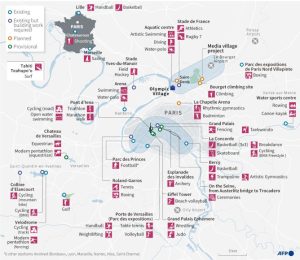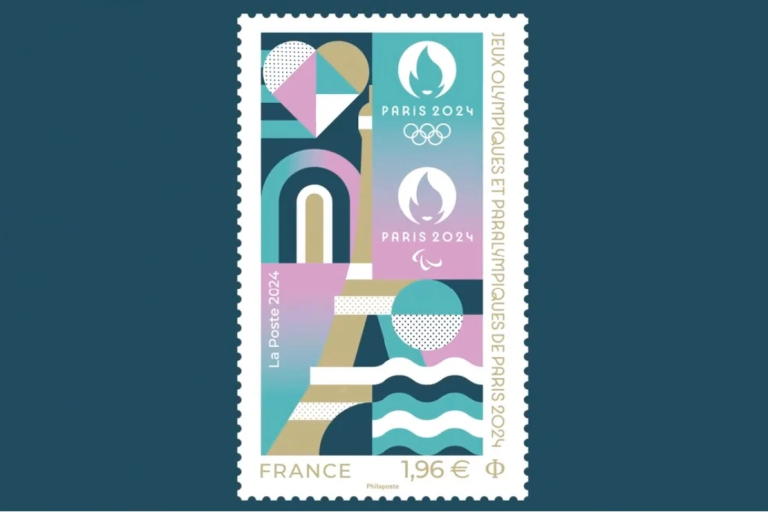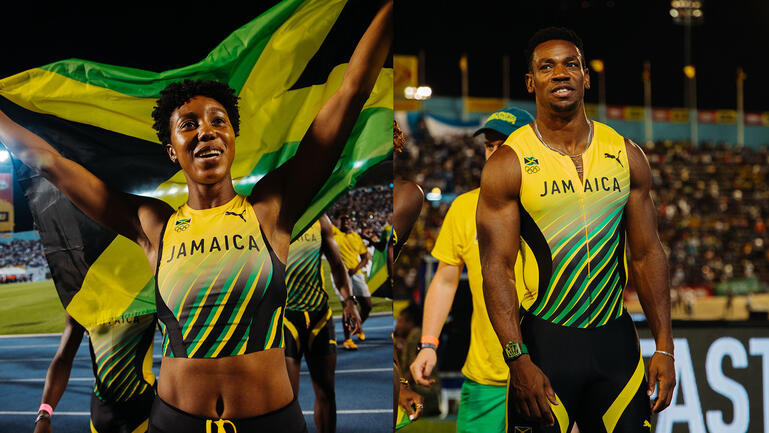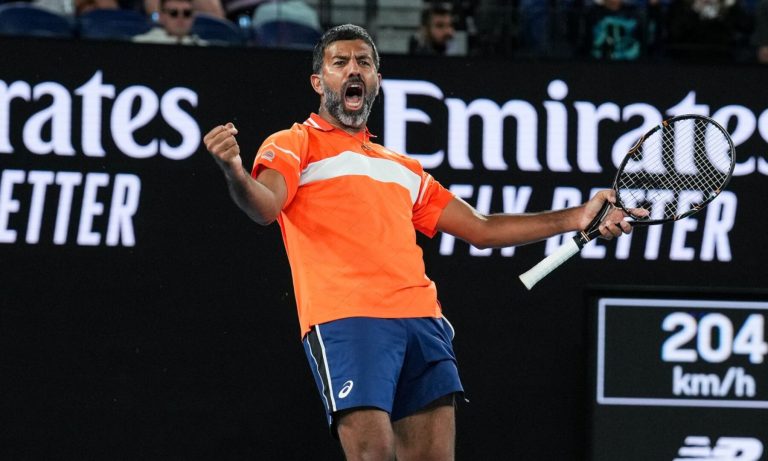List of Paris Olympics 2024 Venues

The anticipation for the 2024 Paris Olympics is building, promising a spectacular fusion of athleticism, cultural richness, and global unity. Paris, along with its neighboring cities, is set to host a myriad of events across iconic venues, showcasing a diverse range of sports – from the traditional to the contemporary. Let’s delve into the details of each venue, each with its unique charm and significance in the tapestry of this global sporting extravaganza.
Also Read: How to Watch Paris Olympics 2024 Live Stream
List of Paris Olympics 2024 Venues
| Venue | Events | Seating Capacity |
|---|---|---|
| Yves du Manoir Stadium | Field hockey | 15,000 |
| Stade de France | Rugby Sevens, Athletics (track and field), Closing Ceremony | 77,083 |
| Paris La Défense Arena (U Arena) | Aquatics (swimming, water polo finals) | 15,220 |
| Porte de La Chapelle Arena | Badminton | 8,000 |
| Paris Aquatic Centre | Aquatics (water polo preliminaries and playoffs, diving, artistic swimming) | 5,000 |
| Le Bourget Climbing Venue | Sport climbing | 5,000 |
| Arena Paris Nord | Boxing (preliminaries, quarterfinals), Modern pentathlon (fencing rounds) | 6,000 |
| Parc des Princes | Football (preliminaries and finals) | 48,583 |
| Roland Garros Stadium | Tennis, Boxing (finals) | 34,000 |
| Paris Expo Porte de Versailles | Volleyball, Table Tennis, Handball (preliminaries), Weightlifting, Basketball (finals) | Varies |
| Bercy Arena | Gymnastics (artistic and trampoline), Basketball (finals) | 15,000 |
| Grand Palais | Fencing, Taekwondo, Basketball (3×3), Breakdancing, Cycling (BMX freestyle), Skateboarding | 8,000 |
| Pont d’Iéna | Aquatics (marathon swimming), Athletics (marathon, race walk), Cycling (road, time trial), Triathlon | 13,000 (3,000 sitting) |
| Eiffel Tower Stadium | Beach Volleyball | 12,000 |
| Grand Palais Éphémère | Judo, Wrestling | 8,000 |
| Les Invalides | Archery | 8,000 |
| Gardens of the Palace of Versailles | Equestrian, Modern pentathlon (excluding fencing rounds) | 80,000 (22,000 + 58,000) |
| Le Golf National | Golf | 35,000 |
| Élancourt Hill | Cycling (Mountain biking) | 25,000 |
| Vélodrome de Saint-Quentin-en-Yvelines | Cycling (track), Cycling (BMX racing) | 5,000 |
| Pierre Mauroy Stadium (Lille) | Basketball (preliminaries), Handball (finals) | 26,000 |
| National Olympic Nautical Stadium (Vaires-sur-Marne) | Rowing, Canoe-Kayak (sprint), Canoe-Kayak (slalom) | 22,000 |
| Stade Vélodrome (Marseille) | Football (6 preliminaries, women’s quarter-final, and one men’s semi-final) | 67,394 |
| Parc Olympique Lyonnais (Lyon) | Football (6 preliminaries, men’s quarter-final, and one women’s semi-final) | 59,186 |
| Stade Matmut Atlantique (Bordeaux) | Football (6 preliminaries, women’s quarter-final, men’s bronze medal match) | 42,115 |
| Stade Geoffroy-Guichard (Saint-Étienne) | Football (6 preliminaries, men’s quarter-final, women’s bronze medal match) | 41,965 |
| Allianz Riviera (Nice) | Football (6 preliminaries, quarterfinals) | 35,624 |
| Stade de la Beaujoire (Nantes) | Football (6 preliminaries, quarterfinals) | 35,322 |
| Old Port of Marseille (Marseille) | Sailing | 5,000 |
| Taiarapu-Ouest (Tahiti) | Surfing | 5,000 |
| National Shooting Centre (Châteauroux) | Shooting | 3,000 |
| Jardins du Trocadéro and River Seine | Opening Ceremony | 30,000 |
| L’Île-Saint-Denis | Olympic Village | 17,000 |
| l’Aire des vents, Dugny | Media Village | – |
| Le Bourget Exhibition Center | IBC (International Broadcasting Center) | 15,000 |
| Palais des congrès de Paris | MPC (Main Press Centre) | – |
Yves du Manoir Stadium:
Nestled in the heart of the sporting fervor, Yves du Manoir Stadium takes center stage as the venue for field hockey. With a renovated capacity of 15,000, it stands as a testament to the city’s commitment to blending heritage with modernity.
Stade de France:
A colossal arena with a capacity of 77,083, Stade de France embodies the grandeur of the Paris Olympics. Hosting events like Rugby Sevens and Athletics, it promises an unforgettable experience, with its existing infrastructure echoing the cheers of past champions.
Paris La Défense Arena (U Arena):
The aquatic events, including swimming and water polo finals, find their home in Paris La Défense Arena. With a capacity of 15,220, this arena represents a fluid blend of architectural prowess and the elegance of aquatic competitions.
Porte de La Chapelle Arena:
Badminton enthusiasts will converge at Porte de La Chapelle Arena, an additional venue boasting a capacity of 8,000. This purpose-built space underscores the commitment to providing top-notch facilities for every sport.
Paris Aquatic Centre:
A hub for aquatic sports preliminaries and playoffs, diving, and artistic swimming, the Paris Aquatic Centre accommodates 5,000 spectators. This venue showcases Paris’s dedication to fostering excellence in water-based competitions.
Le Bourget Climbing Venue:
Scaling new heights, Le Bourget Climbing Venue is a temporary haven for sport climbing aficionados, accommodating 5,000. It embodies the adaptive spirit of the Olympics, transforming spaces for diverse sporting disciplines.
Arena Paris Nord:
A stalwart in the Parisian sporting landscape, Arena Paris Nord hosts boxing preliminaries and quarterfinals, along with fencing rounds for modern pentathlon. With a capacity of 6,000, it preserves the legacy of existing venues seamlessly integrated into the Olympic tapestry.
Parc des Princes:
A bastion of football history, Parc des Princes, with its capacity of 48,583, will witness the highs and lows of football preliminaries and finals. This existing stadium encapsulates the passion and legacy of the beautiful game.
Roland Garros Stadium:
Tennis aficionados will converge at Roland Garros Stadium, hosting tennis and boxing finals. With a seating capacity of 34,000, it echoes the hallowed traditions of one of the world’s premier tennis venues.
Paris Expo Porte de Versailles:
A dynamic space hosting volleyball, table tennis, handball preliminaries, weightlifting, and basketball finals, Paris Expo Porte de Versailles caters to diverse sporting tastes with varying capacities. It epitomizes Paris’s commitment to multifaceted sports celebrations.
Bercy Arena:
A colossal venue with a capacity of 15,000, Bercy Arena is the nexus for gymnastics (artistic and trampoline) and basketball finals. Its sprawling expanse mirrors the grandeur of these athletic disciplines.
Grand Palais:
A cultural icon transformed into a sporting arena, Grand Palais will witness fencing, taekwondo, basketball 3×3, breakdancing, cycling BMX freestyle, and skateboarding. With a capacity of 8,000, it fuses history, art, and sports seamlessly.
Pont d’Iéna:
A picturesque locale for aquatics (marathon swimming), athletics (marathon, race walk), cycling (road, time trial), and triathlon, Pont d’Iéna offers a breathtaking backdrop to these endurance events. With a capacity of 13,000 (3,000 sitting), it combines the scenic beauty of Paris with the rigor of athletic challenges.
Eiffel Tower Stadium:
A symbol of Parisian elegance becomes the stage for beach volleyball, accommodating 12,000 spectators. Eiffel Tower Stadium epitomizes the fusion of iconic landmarks and contemporary sports.
Grand Palais Éphémère:
Temporary yet impactful, Grand Palais Éphémère hosts judo and wrestling, with a capacity of 8,000. This adaptive space underscores Paris’s commitment to providing world-class facilities for every sporting discipline.
Les Invalides:
An emblem of strength and resilience, Les Invalides hosts archery with a capacity of 8,000. It becomes a testament to precision and skill in this historic setting.
Gardens of the Palace of Versailles:
Equestrian events and modern pentathlon find a majestic backdrop in the Gardens of the Palace of Versailles. With a temporary seating capacity of 80,000, this venue combines regality with the pursuit of sporting excellence.
Le Golf National:
A haven for golf enthusiasts, Le Golf National, with a capacity of 35,000, brings a touch of green to the Olympic landscape. Its existing infrastructure showcases Paris’s ability to integrate sporting excellence with natural beauty.
Élancourt Hill:
Cycling (Mountain biking) enthusiasts will navigate the slopes of Élancourt Hill, surrounded by nature, with a seating capacity of 25,000. This venue encapsulates the harmony of athletic challenge and environmental beauty.
Vélodrome de Saint-Quentin-en-Yvelines:
A cycling hub for both track and BMX racing, Vélodrome de Saint-Quentin-en-Yvelines caters to the speed and precision of these events with capacities of 5,000 each.
Pierre Mauroy Stadium (Lille):
A vibrant city like Lille becomes the stage for basketball preliminaries and handball finals at Pierre Mauroy Stadium. With a capacity of 26,000, it transforms into a cauldron of energy for these high-paced sports.
National Olympic Nautical Stadium of Île-de-France (Vaires-sur-Marne):
Rowing, canoe-kayak sprint, and canoe-kayak slalom find a home at this aquatic stadium with a capacity of 22,000. It mirrors Paris’s commitment to providing specialized venues for water-based competitions.
Stade Vélodrome (Marseille):
Football takes center stage in the vibrant city of Marseille at Stade Vélodrome, accommodating 67,394 spectators for a range of matches, including preliminaries and finals.
Parc Olympique Lyonnais (Lyon):
Lyon hosts football preliminaries, men’s quarter-final, and women’s semi-final at Parc Olympique Lyonnais, with a seating capacity of 59,186.
Stade Matmut Atlantique (Bordeaux):
Stade Matmut Atlantique in Bordeaux becomes the battleground for football preliminaries, women’s quarter-final, and men’s bronze medal match, with a capacity of 42,115.
Stade Geoffroy-Guichard (Saint-Étienne):
Football fervor continues in Saint-Étienne at Stade Geoffroy-Guichard, hosting preliminaries, men’s quarter-final, and women’s bronze medal match, with a capacity of 41,965.
Allianz Riviera (Nice):
Nice welcomes football enthusiasts at Allianz Riviera for preliminaries and quarterfinals, with a seating capacity of 35,624.
Stade de la Beaujoire (Nantes):
Nantes becomes a football hub at Stade de la Beaujoire, hosting preliminaries and quarterfinals, with a capacity of 35,322.
Old Port of Marseille (Marseille):
Sailing takes a scenic turn at the Old Port of Marseille, accommodating 5,000 spectators amidst the maritime charm of the city.
Taiarapu-Ouest (Tahiti):
Surfing enthusiasts will find paradise in Taiarapu-Ouest, Tahiti, as it becomes the venue for this exhilarating sport with a capacity of 5,000.
National Shooting Centre (Châteauroux):
Precision meets passion at the National Shooting Centre in Châteauroux, hosting shooting events with a seating capacity of 3,000.
Jardins du Trocadéro and River Seine:
The grandeur of the opening ceremony unfolds at Jardins du Trocadéro and along the River Seine, providing a breathtaking backdrop for the commencement of the 2024 Paris Olympics, accommodating 30,000 spectators.
L’Île-Saint-Denis:
The Olympic Village, situated in L’Île-Saint-Denis, becomes a temporary home for athletes, fostering camaraderie and the Olympic spirit, with a capacity of 17,000.
l’Aire des vents, Dugny:
Dugny transforms into a bustling Media Village, becoming the nerve center for broadcasting and journalism during the Olympic Games.
Le Bourget Exhibition Center:
A familiar face, Le Bourget Exhibition Center, becomes the International Broadcasting Center (IBC), with a capacity of 15,000, providing a technological hub for global coverage.
Palais des congrès de Paris:
The Main Press Centre (MPC) at Palais des congrès de Paris serves as the informational nucleus for journalists covering the 2024 Paris Olympics.





